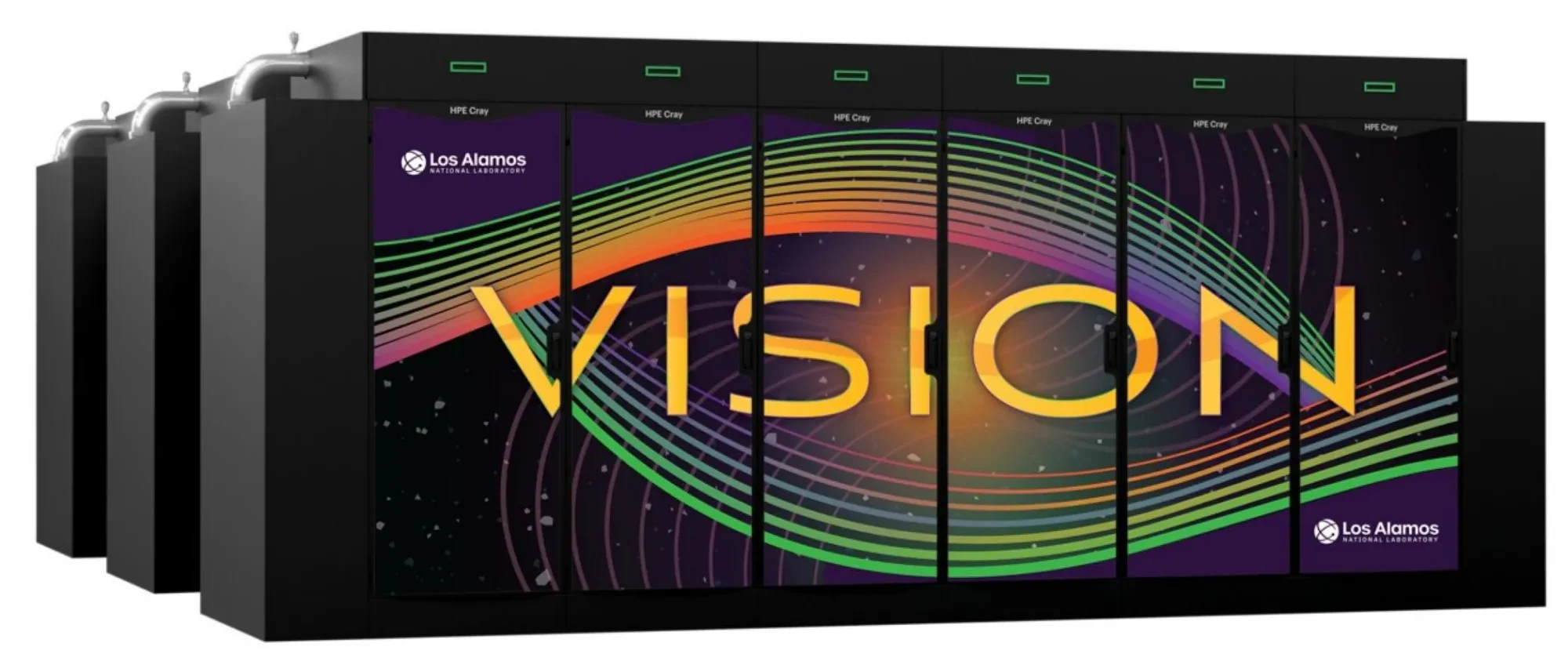HPE to build “Mission” and “Vision” HPCs for Los Alamos National Laboratory in collaboration with Nvidia, to support AI research and national security
Next-generation direct liquid-cooled HPCs will be based on the new HPE Cray Supercomputing GX5000 and feature Nvidia Vera Rubin GPUs to advance AI-driven scientific research
This is a Press Release edited by StorageNewsletter.com on November 3, 2025 at 2:00 pmSummary
- Mission supercomputer, dedicated to support national security initiatives, will deliver 4X more performance, compared to previous system
- Vision supercomputer to execute complex AI workloads to enable increased, concurrent research and innovation for unclassified applications
HPE announced, in partnership with the US Department of Energy (DOE), National Nuclear Security Administration (NNSA) and Los Alamos National Laboratory (LANL), that it has been selected to deliver two state-of-the-art HPCs, named “Mission” and “Vision”. The next-gen systems will be based on the new direct liquid-cooled HPE Cray Supercomputing GX5000 system and feature upcoming Nvidia Vera Rubin Superchips. Mission and Vision are part of the DOE’s $370 million investment to accelerate scientific discovery, advance AI initiatives and strengthen national security.
![]() “These innovations will be among the first to feature next-gen HPE Cray supercomputing architecture to drive AI innovation and scientific impact,” said Trish Damkroger, SVP and GM, HPC & AI infrastructure solutions, HPE.
“These innovations will be among the first to feature next-gen HPE Cray supercomputing architecture to drive AI innovation and scientific impact,” said Trish Damkroger, SVP and GM, HPC & AI infrastructure solutions, HPE.
“For decades, HPE and Los Alamos National Laboratory have collaborated on innovative supercomputing designs that deliver powerful capabilities to solve complex scientific challenges and bolster national security efforts. We are proud to continue powering the lab’s journey with the upcoming Mission and Vision systems. These innovations will be among the first to feature next-gen HPE Cray supercomputing architecture to drive AI innovation and scientific impact.”
Mission and Vision: Revolutionizing Scientific Research and AI Advancement
The Mission HPC will be four times faster than LANL’s Crossroads system and will deliver advanced capabilities in AI, modeling, and simulation to support the NNSA’s security initiatives.
“NNSA has a proud history of applying science and technology to national security challenges. The next generation of NNSA HPCs, marks a significant milestone in ensuring America’s leadership in the global AI race,” said Brandon Williams, NNSA Administrator. “Thanks to the Administration and our private sector partners, HPE and Nvidia, Mission and Vision will incorporate cutting-edge capabilities that will drive analysis and predictions crucial for effective, safe, and reliable national security.”
Vision will build on the success of the HPE-built Venado HPC, which was initially designated as a system for unclassified research. Vision will offer LANL a significant leap forward in computational capabilities for AI-driven research.

“Mission and Vision represent a significant investment in our laboratory’s future,” said Thom Mason, director, Los Alamos National Laboratory. “These systems will not only support critical national security missions but also empower researchers with the tools needed to advance AI and tackle global challenges. These new systems will enable us to push the boundaries of what’s possible in computational science. These new systems will enable us to push the boundaries of what’s possible in computational science.”
“Los Alamos has long advanced the frontier of scientific discovery,” said Ian Buck, VP, hyperscale and HPC, Nvidia. “With Mission and Vision, powered by Nvidia accelerated computing and AI, Los Alamos will push the boundaries of simulation and generative intelligence-advancing science and pioneering the next era of high-performance research for the nation.”













 Subscribe to our free daily newsletter
Subscribe to our free daily newsletter

